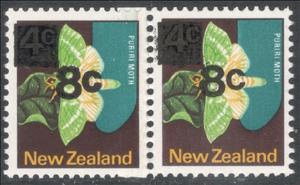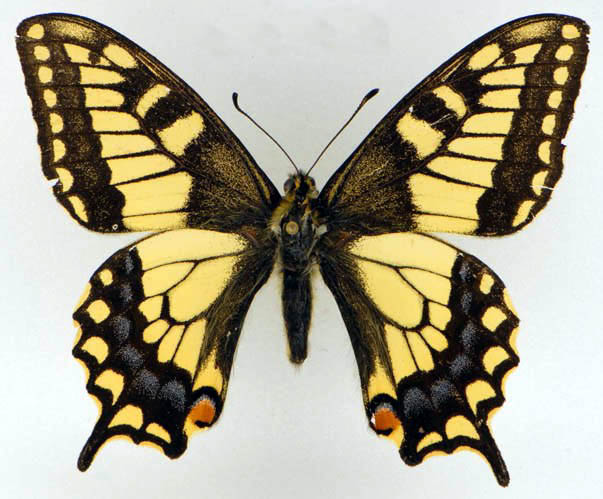Se-tenant: Puriri Moth - Surcharged Coil Join (New Zealand 1977)
Puriri Moth - Surcharged Coil Join (New Zealand 1977)
21 April (New Zealand ) within release Definitives (1970-76) goes into circulation Se-tenant Puriri Moth - Surcharged Coil Join face value 2*8 New Zealand cent
| Se-tenant Puriri Moth - Surcharged Coil Join in catalogues | |
|---|---|
| Colnect codes: | Col: NZ 1977.04.21-2 |
Se-tenant is square format.
From the 400 stamp coil for the "Postaffix" machines.Also in the issue Definitives (1970-76):
- Se-tenant - Puriri Moth - Surcharged Coil face value 4*8;
- Se-tenant - Puriri Moth - Surcharged Coil Join face value 2*8;
Se-tenant Puriri Moth - Surcharged Coil Join it reflects the thematic directions:
Animals are multicellular, eukaryotic organisms of the kingdom Animalia (also called Metazoa). All animals are motile, meaning they can move spontaneously and independently, at some point in their lives. Their body plan eventually becomes fixed as they develop, although some undergo a process of metamorphosis later on in their lives. All animals are heterotrophs: they must ingest other organisms or their products for sustenance.
Lepidoptera or lepidopterans is an order of winged insects which includes butterflies and moths. About 180,000 species of the Lepidoptera have been described, representing 10% of the total described species of living organisms, making it the second largest insect order (behind Coleoptera) with 126 families and 46 superfamilies, and one of the most widespread and widely recognizable insect orders in the world
Insects (from Latin insectum, a calque of Greek ἔντομον [éntomon], "cut into sections") are a class (Insecta) of hexapod invertebrates within the arthropod phylum that have a chitinous exoskeleton, a three-part body (head, thorax and abdomen), three pairs of jointed legs, compound eyes and one pair of antennae. They are the most diverse group of animals on the planet, including more than a million described species and representing more than half of all known living organisms. The number of extant species is estimated at between six and ten million, and potentially represent over 90% of the differing animal life forms on Earth. Insects may be found in nearly all environments, although only a small number of species reside in the oceans, a habitat dominated by another arthropod group, crustaceans. The life cycles of insects vary but most hatch from eggs. Insect growth is constrained by the inelastic exoskeleton and development involves a series of molts. The immature stages can differ from the adults in structure, habit and habitat, and can include a passive pupal stage in those groups that undergo 4-stage metamorphosis (see holometabolism). Insects that undergo 3-stage metamorphosis lack a pupal stage and adults develop through a series of nymphal stages. The higher level relationship of the Hexapoda is unclear. Fossilized insects of enormous size have been found from the Paleozoic Era, including giant dragonflies with wingspans of 55 to 70 cm (22–28 in). The most diverse insect groups appear to have coevolved with flowerin plants.



